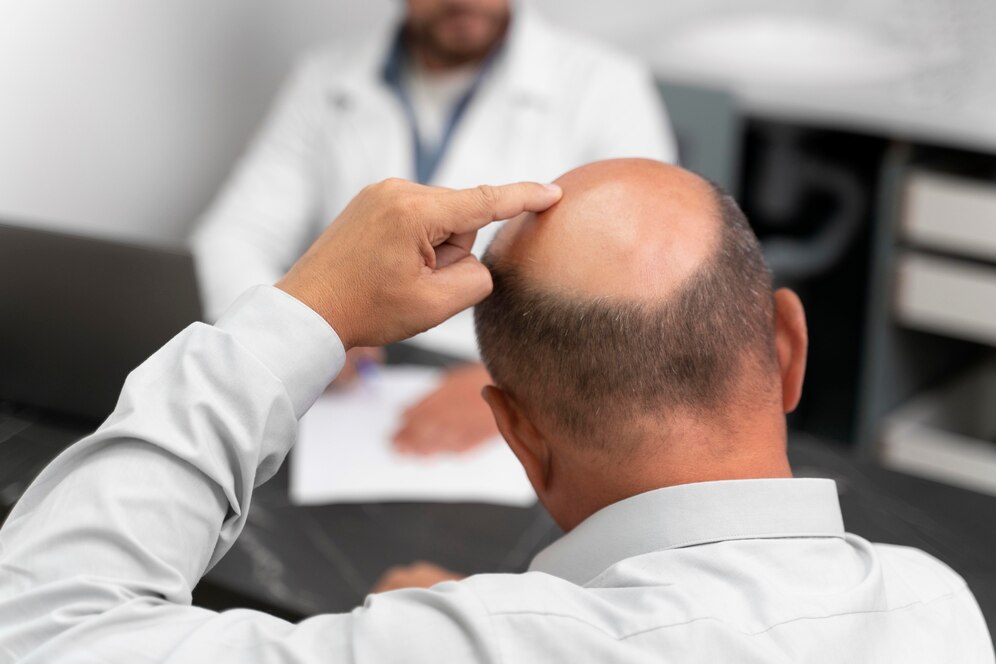Is a Hair Transplant Permanent? Understanding Long-Term Results
- Insights from top professionals in Noida
For those who have tried many options and are exhausted from the never-ending problem. Hair transplant is a one-stop solution for all your hair thinning and balding issues. Is a hair transplant a lifelong solution to hair loss? The answer is not that simple. Let’s break down what ‘permanent’ means in hair restoration. Gone are the days when there were only selective clinics in which they provided this service, due to saturation in the marketplace the prices have also become very economical i.e., affordable for even the common man. The blog will delve into the long-term results of hair transplant procedures, enriched with insights from top professionals who specialize in achieving natural, lasting outcomes in the field. Experts weigh in on what makes hair transplant results long-lasting and natural-looking.
Expert Tip: "The success of hair transplants depends on the method and skill of the surgeon, as well as the patient’s hair type," says Dr. Samiksha Tyagi, a top hair transplant specialist in Noida.
Is It Permanent?
Hair used in transplants is typically taken from the back or sides of the scalp, areas genetically resistant to hair loss due to DHT (Dihydrotestosterone), the hormone linked to hair thinning. The donor area is the resistant area and this is because these donor follicles are less affected by hair loss factors, they tend to stay intact after transplantation. While transplanted hair is more resilient, the results after healing don’t stay the same throughout, natural aging can lead to some thinning over time, similar to how natural hair may thin with age. The transplanted hair follicles will get integrated with the scalp and continue their regular growth cycles, offering a lasting, natural result.
Expert Tip: "While hair transplants offer long-lasting results, maintaining a healthy lifestyle and following post-procedure care is key to preserving the outcome," says Apolo Hair Studio.
What Factors Affect Longevity?
A lot of factors are there when it comes to affecting the longevity of the treatment. Younger patients might continue to lose their natural hair over time, which impacts the appearance of the transplant. A more aged patient with stable hair loss often will have more predictable, long-term results. It also depends upon the thickness, color, and texture of hair as it will affect coverage and overall appearance. Curly or rough hair provides more coverage and volume, while fine hair requires additional grafts for the desired density. Genetics also play a role in this as a patient’s family history of ongoing hair loss, influences the likelihood and extent of future thinning. Following aftercare procedures and tips is essential for successful healing and long-term results, including proper washing, avoiding strenuous activity, and using prescribed products. Results will vary, so you need to have realistic expectations about the density and coverage. Consulting a specialist can help you align expectations with other factors and get the desired outcomes.
Expert Tip: "Patients in their late 20s to 40s often experience better long-term outcomes because hair loss has stabilized by then," says Doctor New Life Polyclinic.
What Can Patients Expect Over Time?
Shortly after the procedure, the transplanted hair follicles enter a shedding phase for 2-4 weeks. This is normal and part of the natural hair growth cycle as new hair roots take hold. Around the third to fourth month, new hair emerges from the transplanted follicles. At first, the hair may be fine and sparse, gradually thickening over time. By the 9 to 12 month mark, the transplanted hair has mostly grown, showcasing the final result with natural thickness and density. While transplanted hair is generally permanent, some patients may experience thinning in the non-transplanted areas, requiring touch-ups or supplementary treatments to maintain balanced coverage.
Expert Tip: "Transplanted hair typically grows naturally for years, but some patients opt for touch-ups to maintain density," says Essence Cosmetic Clinic.
Maintenance Tips for Long-Lasting Results
These are tips to maintain and fasten the process of hair growth along with making the results last long:
- Regular Check-Ups: Schedule follow-ups with your specialist to monitor hair growth progress and scalp health.
- Balanced Diet: Nutrient-rich foods, especially those high in protein, vitamins, and minerals, support hair health and growth.
- Refrain from Harsh Treatments: Avoid chemical treatments or heat styling that can damage new hair follicles.
- Supportive Treatments: Consider taking PRP (Platelet-Rich Plasma) therapy to stimulate growth and strengthen transplanted hair.
Expert Tip: "Post-transplant care is as crucial as the procedure itself; scalp health maintenance is key to long-lasting results," says Lafameux Derma.
Final Thoughts
Hair transplants provide a durable fix for hair loss, using resistant hair follicles for long-lasting results. Beauty is pain so proper aftercare, including regular check-ups, a balanced diet, and avoiding damaging treatments, is very crucial to maintain results. You will have to understand that while transplants are effective, results vary individually, and some may need additional touch-ups over time. If you want more personalized advice or expert guidance on this, book or schedule a consultation today using Cosmolance.




No comments yet. Be the first to comment!